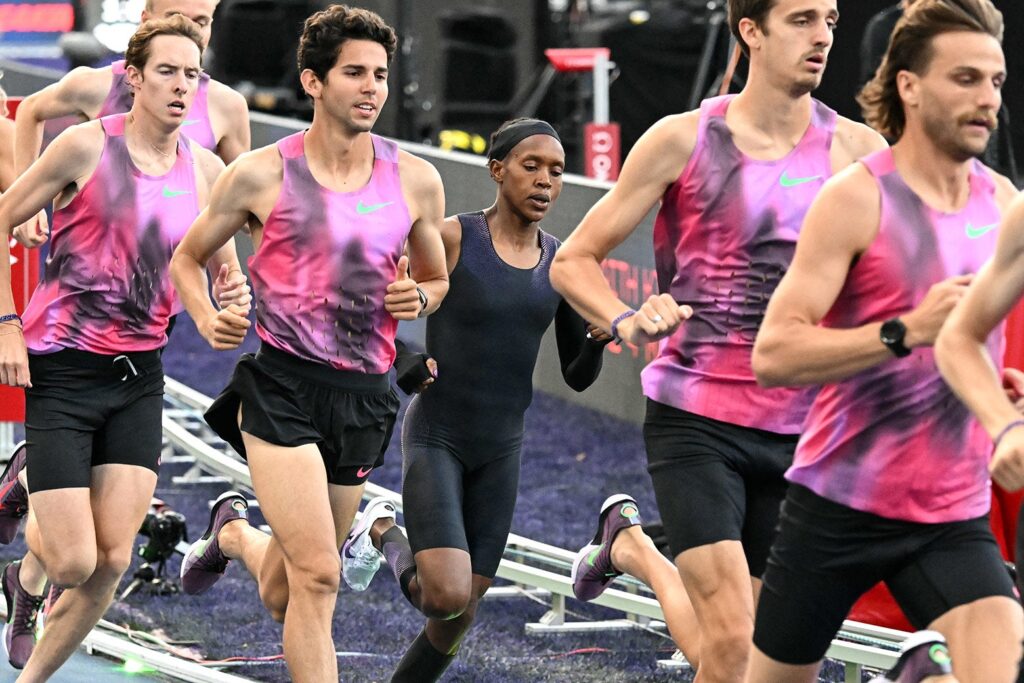
On Thursday in Paris, Faith Kipyegon attempted a feat never before achieved by a woman: running a mile in under four minutes. The event was billed as a potential breakthrough for women’s sports, yet Kipyegon did not succeed. However, this does not mean she failed. Instead, her attempt has become a revealing case study in how marketing hype, media spin, and misunderstood science can distort reality.
In February, a scientific study suggested that Kipyegon could run a mile in 3:59.37, provided she had perfect drafting from pacers and ideal running conditions. This prediction was based on ambitious mathematical models and assumed she was in the same peak condition as when she set the women’s mile world record in 2023 with a time of 4:07.64. The study’s authors were clear about these limitations, but if everything went perfectly, a sub-four-minute mile seemed possible.
The Role of Marketing and Media
Following the study, a Nike-sponsored PR event was organized for Kipyegon to make the attempt. Media coverage of the study created the impression that Kipyegon was already capable of running a sub-four-minute mile or was on the verge of doing so with the right aerodynamic assistance. Nike’s multimillion-dollar campaign, tied to proprietary gear, framed the event as a historic moment in the making. The public was led to believe that scientific innovation would enable Kipyegon to shatter the barrier for women everywhere.
Whether the hype resulted from misunderstanding or misrepresentation of the science, the outcome was the same: an inflated sense of what was likely. Notably absent from the narrative was a second, more conservative analysis published in April, co-authored by a Nike scientist, which concluded that current data were “insufficient to suggest that a sub-4 minute mile is imminent.” This study did not feature in Nike’s marketing materials, indicating that at least one person at Nike recognized the long odds. However, the myth of an inevitable breakthrough was more marketable than statistical uncertainty.
The Reality of Elite Running
As the event unfolded, Kipyegon did not break the barrier, and she was not close. She improved her personal best by 1.2 seconds but needed more than six additional seconds to reach her goal. In elite running, where medals are often decided by fractions of a second, this was not a brush with history but a chase after a distant shadow.
The outcome was not surprising. Moving from 4:07.64 to sub-four represents more than a 3 percent improvement, a quantum leap in elite distance running. Kipyegon was already performing at the limits of human potential, achieved through rigorous training since her teenage years. She has had access to the best coaching, training, and footwear available. The notion that aerodynamic tweaks, pacers, and a new Nike sports bra could close that gap was, frankly, unrealistically optimistic. Eliud Kipchoge’s sub-two-hour marathon, under similarly ideal conditions, required only a 1.6 percent improvement. Why should Kipyegon experience double the benefit?
The Consequences of Misplaced Expectations
Leading up to the event, the consistent message was that science would make the “impossible” possible. Now that the attempt fell short, the public may unfairly question why the scientists got it wrong. This pattern of inflating the promise of a scientific study, spinning it into a marketing campaign, and retreating quietly when reality does not deliver has consequences for public trust in science. The actual science was clear, but its nuance was quickly lost in media coverage and Nike promotions.
There is also the issue of the method used for Kipchoge’s historic attempt, which was dispiriting. Nike included a team of pacers, mostly men, because they are physiologically more capable of running fast and steady splits at a pace few women can maintain. While this is biology, not bias, the message it sends is problematic: to reach greatness, a woman needs men to get her there.
“Sometimes you have to change the rules for people that are special. … We have to find a way to let the world see her excellence. And if you have to change the rules a little bit, let’s do it.” — Carl Lewis, nine-time Olympic gold medalist
Lewis’s remark, though meant to praise, reinforced the idea that a woman’s excellence requires exceptions, as if Kipyegon’s three Olympic gold medals and current world records were insufficient. Now that Kipyegon did not break the barrier, the message echoes louder: Even with a team of men and the best possible conditions, women still fall short.
Looking Forward
The time trial was not framed as an elite athlete chasing a personal best or improving upon her world record. Instead, it was explicitly a campaign to break the four-minute barrier for all women. Now that she did not achieve that, Nike marketed Kipyegon as “brave” for chasing a target she likely could not reach. Celebrating someone for attempting what is physiologically impossible is not progress in women’s sports equality. A system that sells a triumph of courage regardless of outcome risks patronizing women athletes rather than respecting their actual achievements.
This was not about Faith Kipyegon’s dreams or talent. She did not overpromise, nor did the actual science that inspired this. Instead, it was about a corporation selling sports bras and speed suits by turning long odds into marketing gold through an unrealistic hype machine.
Ultimately, what is more inspiring: Kipyegon charging through the final lap alone, widening the gap from the world’s fastest women as she sprints to a 4:07 finish in 2023, or watching her flanked by men, straining to keep pace, crossing the line in 4:06? The former, every single time.







